Phantom Powered Microphone Pre-Amplifier using SSM2019
- Rajkumar Sharma
- 9.474 Views
- moderate
- Tested
- SKU: EL92886
- Quote Now
The project published here is based on SSM2019 IC which is a latest-generation Pro audio preamplifier. A female XLR connector is provided to connect differential Micro-phone. Circuit also provides Phantom power input, combining SSM preamplifier design expertise with advanced processing. The result is excellent audio performance, the attached trimmer potentiometer helps to adjust the output gain. The SSM2019 is further enhanced by its unity-gain stability. Key specifications include ultra-low noise (1.5 dB noise figure) and THD (<0.01% at G = 100), complemented by wide bandwidth and high slew rate. Applications for this low-cost device include microphone preamplifiers and bus summing amplifiers in professional and consumer audio equipment, sonar, and other applications requiring a low noise instrumentation amplifier with high gain capability. Z1 to Z4 provide transient overvoltage protection for the SSM2019 whenever microphones are plugged in or unplugged. Gain level adjustable 0 to 60dB. CN2 connector for supply input and audio output, CN4 Female XLR connector for Micro-Phone input, CN1 Phantom Power input.
Features
- Supply +/-18V DC Dual Supply
- Phantom Power Input 48V DC
- Female XLR Connector for Microphone Input
- GAIN Adjustable 0dB-60dB
- PR1 Trimmer Potentiometer For Gain Adjust
- Header Connector for supply input
- Header Connector for Phantom Power Input
Schematic
Parts List
Connections



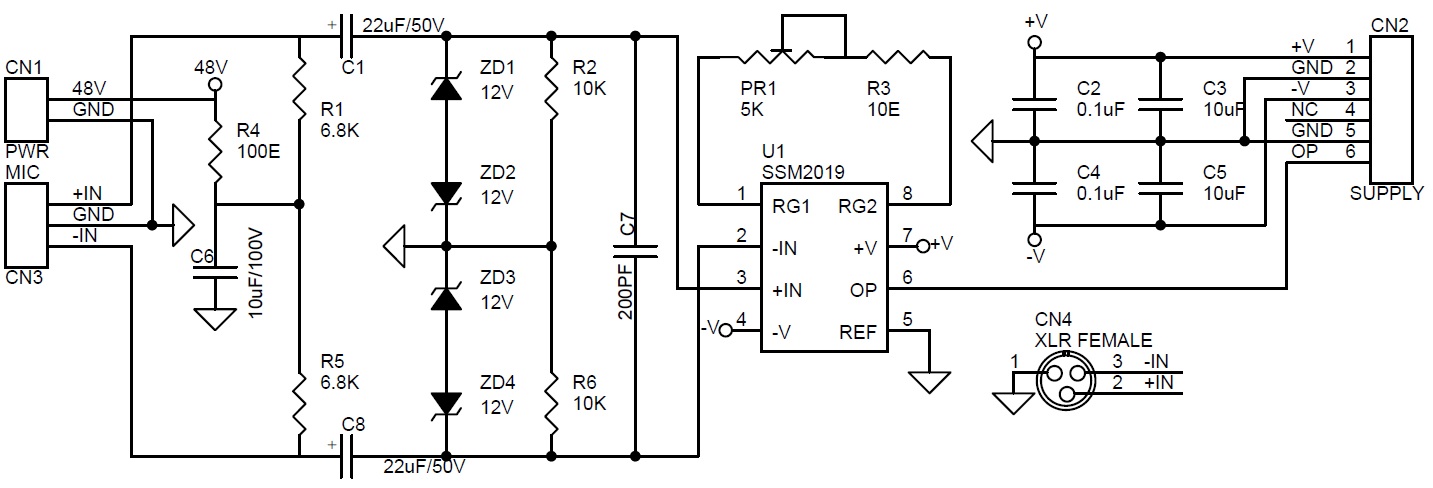
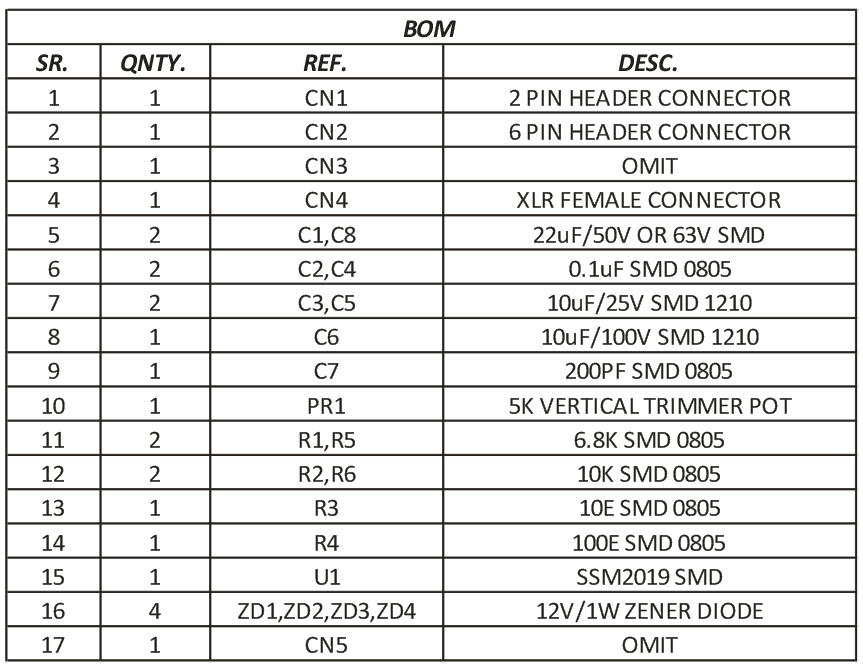
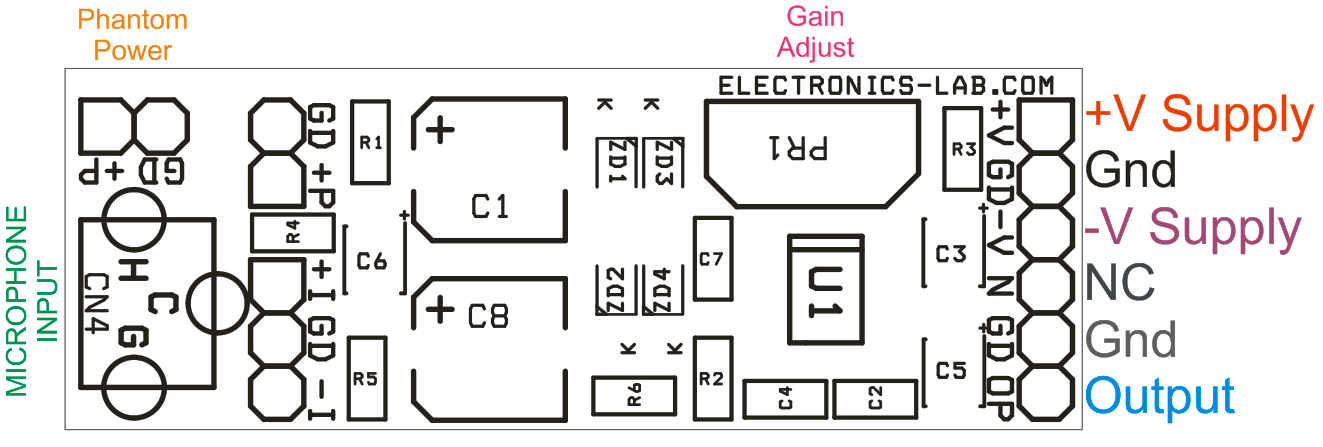
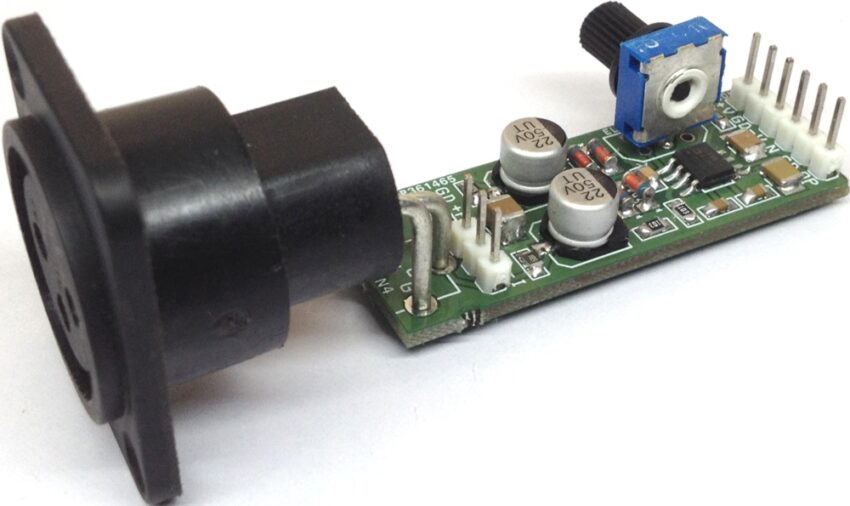


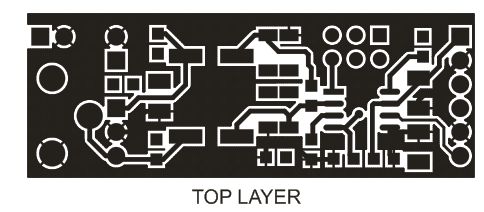






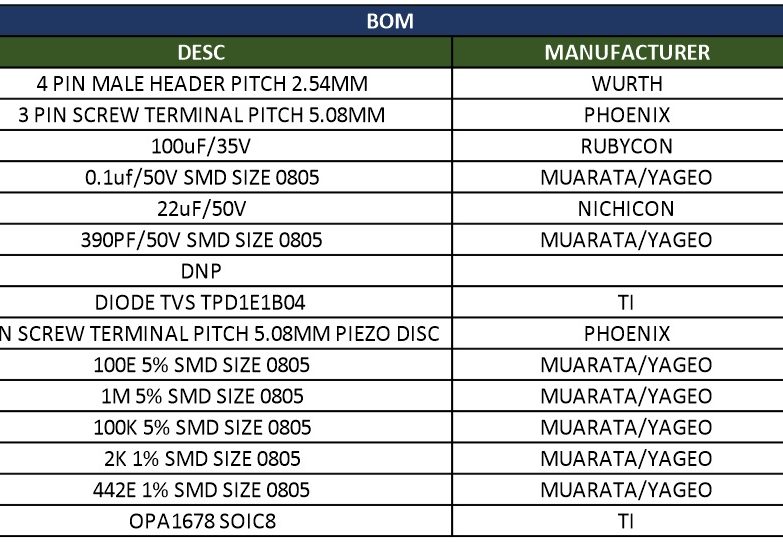
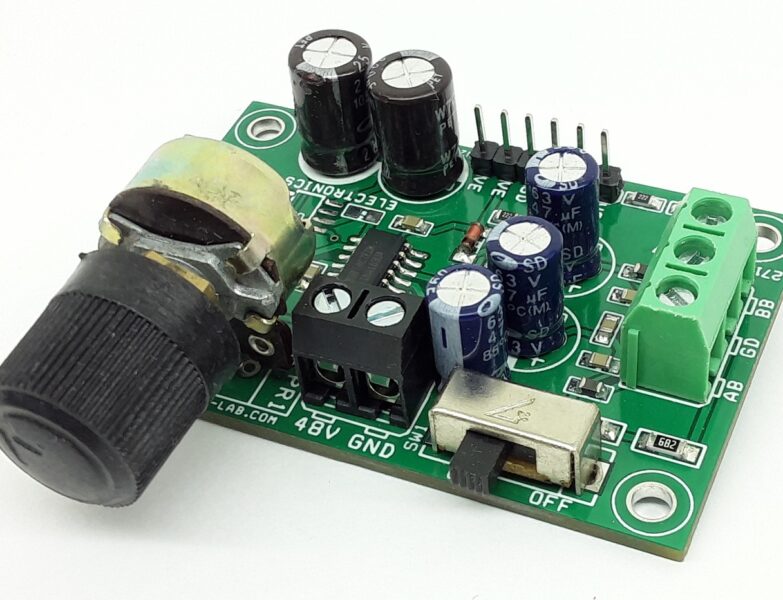
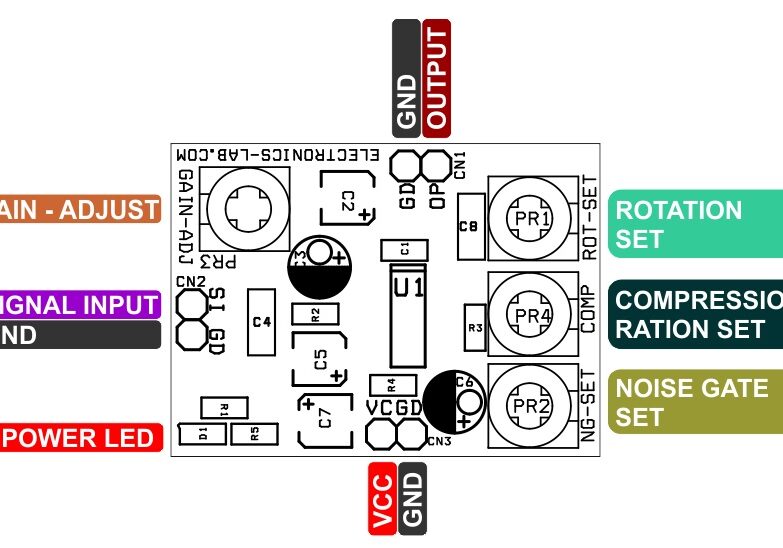
What will be the cost of SSM2019, I WANT TO PURCHASE THIS.
What’s the value of R3 and R4? 10E and 100E??? What’s “E”?
The standard values are: pico (p), nano (n), micro (u), milli (m), kilo (k), mega (M)…
10E = 10Ω and 100E = 100Ω
Thanks, meanwhile I found it in the ssm2019 maker’s pdf as recommendation. Please, use “ohm” or nothing instead of “E”, it’s confusing.
Thank You!
I’ve been through this at work. “E” is a standard way of showing Ohms on a schematic in many companies, and is rigidly enforced. I avoid it these days (if I can) because spreadsheets don’t like it (eg 4E7 in a BOM becomes 40MOhms!). Having nothing looks confusing to some people (who require some sort of ‘unit’ after a number), so I usually use “R”.